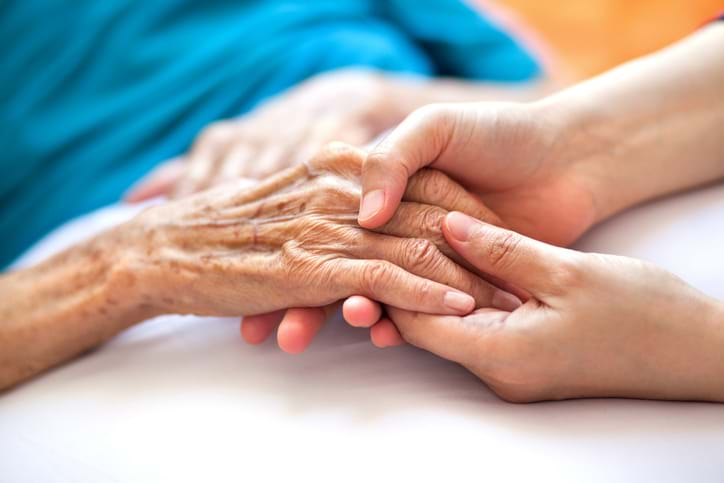Is It Burnout?
Working in aging services isn’t just a career, it’s a calling. And as a leader in this industry, it’s obvious that you care about people—not only the patients, but also your team members. They are like family, and when you see them suffer, you suffer, too. Some days it may feel like you’re walking a tight rope while carrying the weight of the world on your shoulders—you feel responsible to keep the patients, your team members, and your bottom line all healthy—a veritable balancing act. Which is why it’s vital to keep an eye out for symptoms of burnout in both yourself and your team members, because burnout will topple that balancing act faster than just about anything else.
Burnout can manifest differently for each person. Do you or your team members feel physically, mentally, and emotionally exhausted all the time? Does your team feel disengaged with their work? Or do they struggle with cynicism, hopelessness, lethargy or general apathy? Are team members irritable all the time, sniping at each other in the break room, dealing with insomnia, or even struggling with substance abuse? Or do they feel like they just have nothing left in their bucket to give? For many aging services workers, the answer to these questions is a resounding “yes.”
The term burnout is frequently bandied about in our daily newsfeed and conversations, but what truly is burnout? In 2019, the World Health Organization (WHO) officially categorized burnout as a syndrome resulting from “chronic workplace stress.”1 The American Psychological Association (APA) defines burnout as “physical, emotional, or mental exhaustion accompanied by decreased motivation, lowered performance and negative attitudes toward oneself and others.”2 And unfortunately, this syndrome is on the rise. In Deloitte’s3 marketplace survey on burnout, it was found that 77 percent of the respondents suffered from burnout, and we know that it is especially prevalent in health care workers and particularly widespread amongst those in the aging services sector.
Why Is It So Prevalent?
It doesn’t take a rocket scientist to figure out why burnout is becoming endemic to those in the health care and aging services industries. The Covid-19 global pandemic wreaked havoc in these fields, overworking the front-line workers while alternately revering and vilifying them on a seemingly endless seesaw of public opinion. For two solid years, there was no cease-fire on their stress levels—no chance of recuperation or self-care. But it goes beyond that. As Dr. Vivek H. Murthy explained in an August, 2022 article for The New England Journal of Medicine, “Burnout manifests in individuals, but it’s fundamentally rooted in systems. And health worker burnout was a crisis long before Covid-19 arrived. Causes include inadequate support, escalating workloads and administrative burdens, chronic underinvestment in public health infrastructure, and moral injury from being unable to provide the care patients need. Burnout is not only about long hours. It’s about the fundamental disconnect between health workers and the mission to serve that motivates them.”4
So, it’s no surprise that our work teams are still affected by burnout. And burnout can have a dire effect on businesses—it can lead to an increase in workers compensation claims, an increase in healthcare costs for those who are self-insured, and even an increase in professional liability claims. None of these are good for the bottom line, so it’s paramount that we address burnout at its roots.
How do we fix It?
We believe that Dr. Murthy was correct when he stated that burnout results from the “disconnect between health workers and the mission to serve that motivates them.” To help burnout on a fundamental level, we need to re-engage workers with their purpose. Our research has shown that re-engagement is the key to eliminating burnout. We need to launch focused campaigns to remind our teams why they chose to spend their life caring for others. It can be as simple as having them fill bulletin boards with pictures of what they wanted to be when they were kids. We need to re-instill the pride they once had in their life’s work. And we need to provide incentive programs and flexible benefits to recruit and retain our talent. Simple tweaks to your business model can have a profound effect on the quality of life of oour health workers and our patients, while at the same time stabilizing your bottom line.
To learn more about burnout and what you can do to combat it, join our upcoming presentation at the LeadingAge Annual Conference and Exhibition in Vail, Colorado, May 15-17, 2023.
Sources:
- “Burn-out an ‘occupational phenomenon’: International Classification of Diseases,” World Health Organization, https://www.who.int/news/item/28-05-2019-burn-out-an-occupational-phenomenon-international-classification-of-diseases
- “Burnout,” APA Dictionary of Psychology, https://dictionary.apa.org/burnout
- “Workplace Burnout Survey: Burnout without borders,” Deloitte, https://www2.deloitte.com/us/en/pages/about-deloitte/articles/burnout-survey.html
- Vivek H. Murthy, M.D., M.B.A., “Confronting Health Worker Burnout and Well-Being,” the New England Journal of Medicine, July 13, 2022, https://www.nejm.org/doi/full/10.1056/NEJMp2207252








